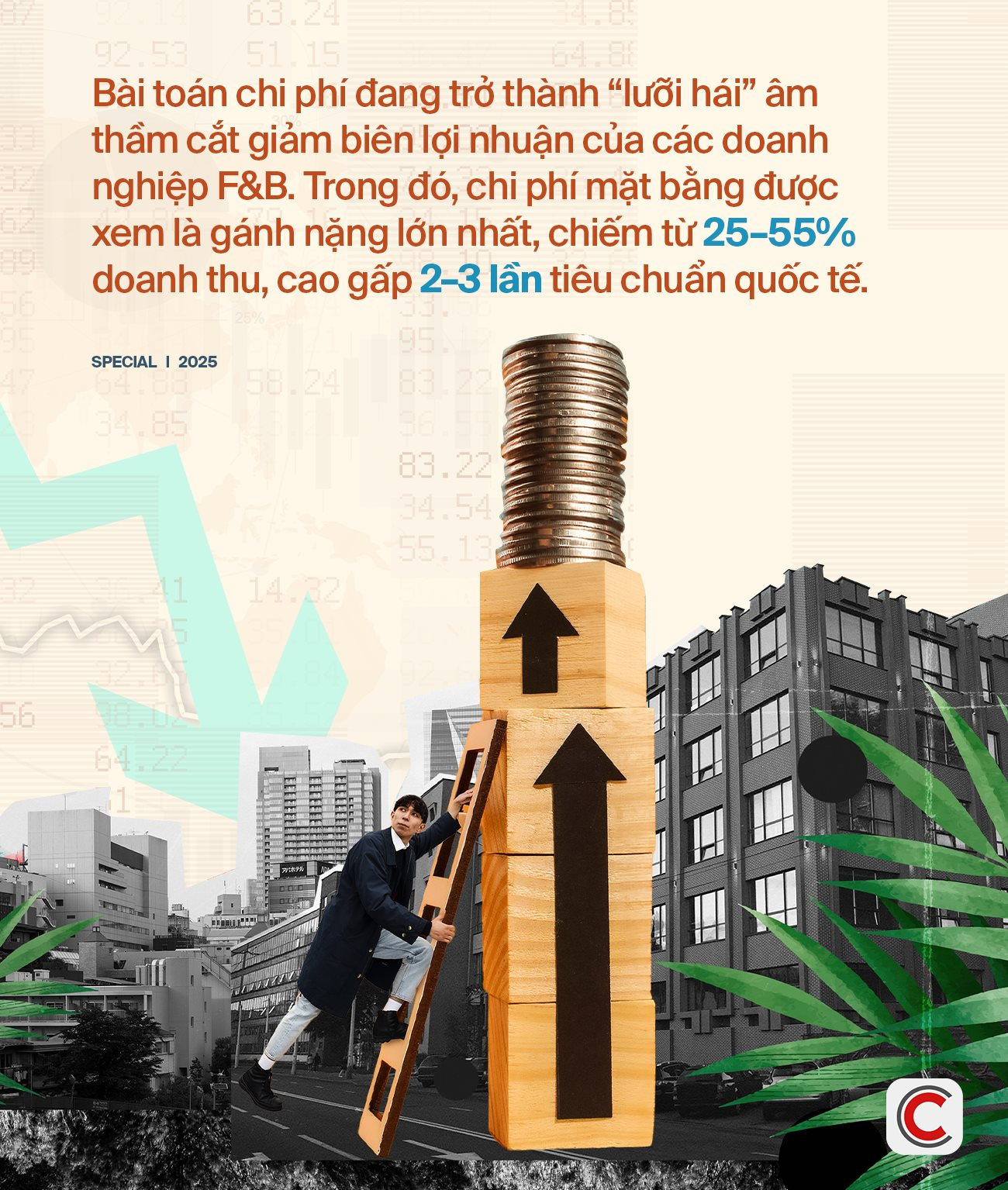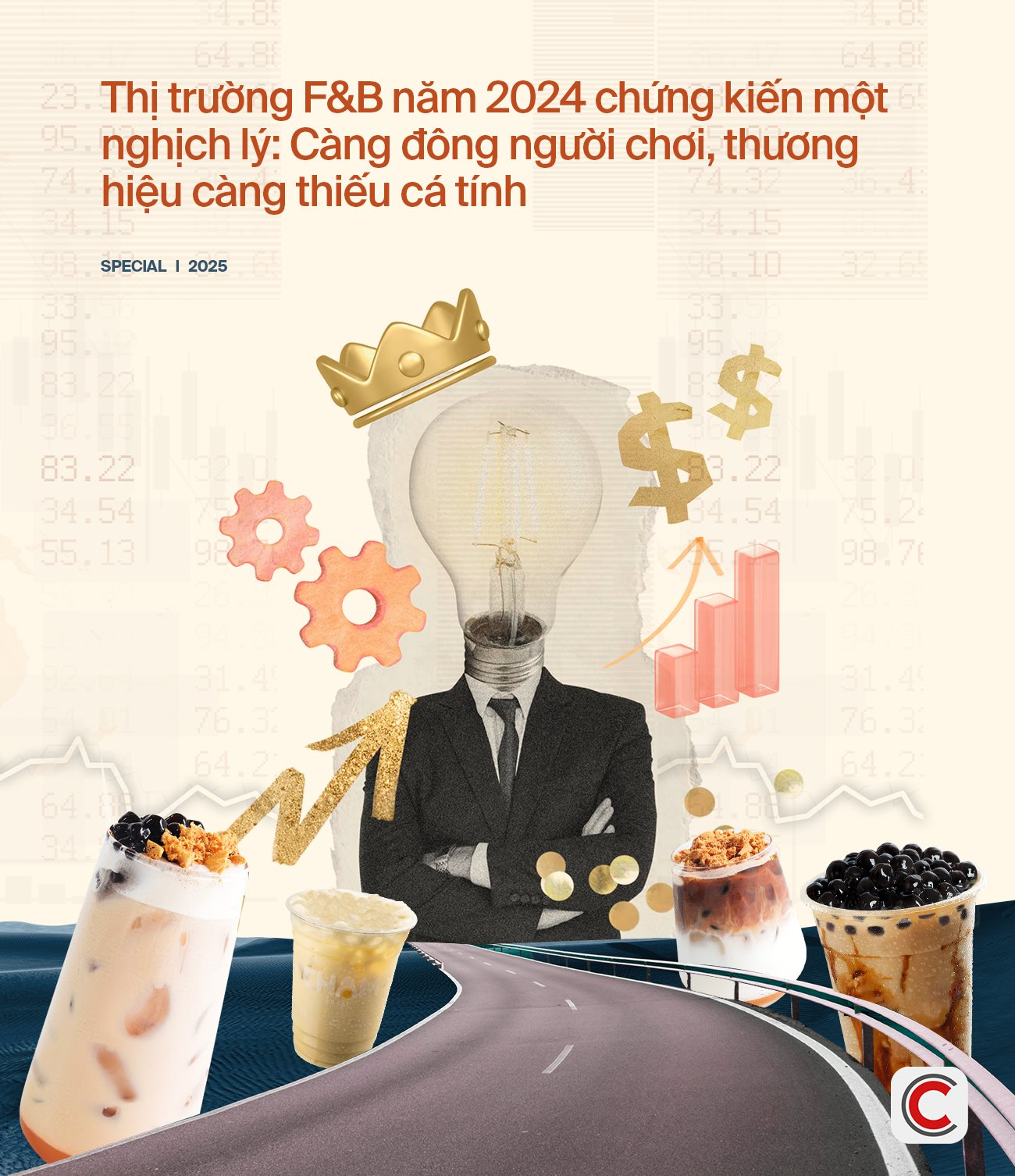The F&B industry in Vietnam is facing significant challenges, with rising costs and changing consumer behavior threatening the survival of many businesses. For store owners like Ms. Hanh, who runs a small drink shop in Hanoi, it’s a constant struggle to keep afloat as most of her monthly revenue goes towards rent.
Ms. Hanh’s situation is not unique. iPOS.vn, a platform providing management solutions to over 100,000 restaurants and cafes, dubbed 2024 as a “painful turning point” for the F&B industry. High rental costs, particularly in prime locations, are taking a toll on businesses, with 35% of large chains closing down due to the burden of “golden” locations.
At the same time, Gen Z, the main consumer force, is shifting away from extravagant experiences toward pursuing authenticity and value for money. This shift in consumer behavior is causing a wave of international and local giants, from Starbucks to The Coffee House, to downsize or exit the market.

The cost equation is further complicated by rising operational and raw material costs, with ineffective management exacerbating the problem. Inefficient inventory management leads to significant waste, especially for perishable items like meat, seafood, and coffee. Additionally, the mandatory adoption of electronic invoices for direct-to-consumer businesses from June 1st adds to the financial burden for traditional F&B operations.

The situation is similar in Ho Chi Minh City, where high-profile locations like Nguyen Hue Walking Street demand exorbitant rents, often exceeding potential revenue. This leaves businesses with meager profit margins, barely covering other expenses.
Once considered a golden ticket to brand building, prime locations are now losing their allure. Many prominent addresses have seen a rapid turnover of tenants, indicating that even well-known brands are struggling to justify the high costs. International brands like Starbucks and McDonald’s have also withdrawn from expensive locations, unable to generate sufficient revenue to cover the steep rents.
As consumer behavior evolves, the importance of a prime location is waning. Instead, customers are gravitating towards brands that offer unique experiences, authentic values, and a strong brand identity. This shift presents an opportunity for F&B businesses to focus on creating memorable experiences and building a distinct brand personality to engage and retain customers.

Beyond the challenges of rental costs and changing consumer behavior, the F&B industry is also grappling with a crisis of identity. In a crowded market, many new brands lack distinct personalities, with 72% of new entrants simply copying their competitors’ menus, according to Q&Me’s survey. This “fast food” mentality, particularly prevalent in tea and coffee shops, leads to a homogenous experience that quickly bores Gen Z consumers.
To make matters worse, short-lived trends like cheese tea and sea foam coffee only add to the financial strain, as owners spend significant amounts on menu redesigns, staff training, and advertising to keep up with the latest fads. However, these investments often fail to yield proportionate returns, as evidenced by the short-lived popularity of butterfly pea tea in 2023, which saw an 80% closure rate within three months due to a lack of unique selling points.

In a highly competitive market, the lack of differentiation pushes price to the forefront, putting capital-constrained businesses at a severe disadvantage. Additionally, the absence of professional management practices further exacerbates financial and operational challenges. According to iPOS.vn, 68% of owners are unable to accurately calculate food costs due to inadequate tracking tools, resulting in significant monthly losses due to inventory and quantity miscalculations.
The report by EY Vietnam on a bakery chain’s closure due to soaring pork prices underscores the critical nature of cost control. Similarly, Navigos Group’s finding that 82% of F&B businesses lack KPIs for employees, leading to high turnover rates of up to 35%, highlights the importance of structured training and compensation policies. The lack of long-term planning, with 91% of owners lacking a 3-5 year development strategy, further contributes to the high-risk nature of expansion in this industry.
While the F&B industry in Vietnam offers immense potential, it is also a highly competitive arena. To succeed, business owners must go beyond culinary skills and embrace a market-savvy approach, staying agile and responsive to trends and consumer behavior shifts. Effective cost management, adaptation to changing consumer preferences, and a strong brand identity are key to weathering the challenges and thriving in this dynamic industry.
The F&B Landscape Trend: Why ‘Prime’ Locations Are No Longer a Privilege, and How ‘Alleyway’ F&B Concepts Are Flourishing.
The prime location is no longer a guarantee of success for F&B businesses. A new trend is emerging, favoring “alleyway eateries” – those hidden gems tucked away in alleys and side streets. These establishments offer cost-efficiency, a focused product range, and a savvy online presence to attract customers.
“A Call for Evolution: Elevating Vietnamese Brands to Match the Nation’s Aspirations”
“If your brand disappeared from the market tomorrow, would anyone truly miss it?” This is not just a question but a wake-up call.
The Rising Cost of Electricity: Consumers Fear the Pinch, Businesses Fear the Fee
As of May 10th, the average retail electricity price has surged by 4.8%. Amidst the current challenges, businesses are struggling to cope with this additional burden, likening it to a knockout blow. With rising electricity costs, enterprises are grappling with diminished resilience, while consumers fear a knock-on effect on the prices of other goods and services, necessitating spending cuts.
The Rising Electricity Prices: Consumers Fear the Pinch, Businesses Brace for Added Costs
As of May 10th, the average retail electricity price has surged by 4.8%. Amidst the current challenges, this hike feels like the proverbial “last straw” for businesses already struggling to stay afloat. With operating costs skyrocketing, enterprises are grappling to maintain their resilience. Consumers, too, are feeling the pinch, concerned about the potential knock-on effects on the prices of other goods and services, and contemplating cutbacks in their spending.
The Rising Cost of Electricity: A Strain on Household Budgets
The soaring electricity prices are impacting not just the manufacturing industry, but also small businesses, cafes, and households alike.




















